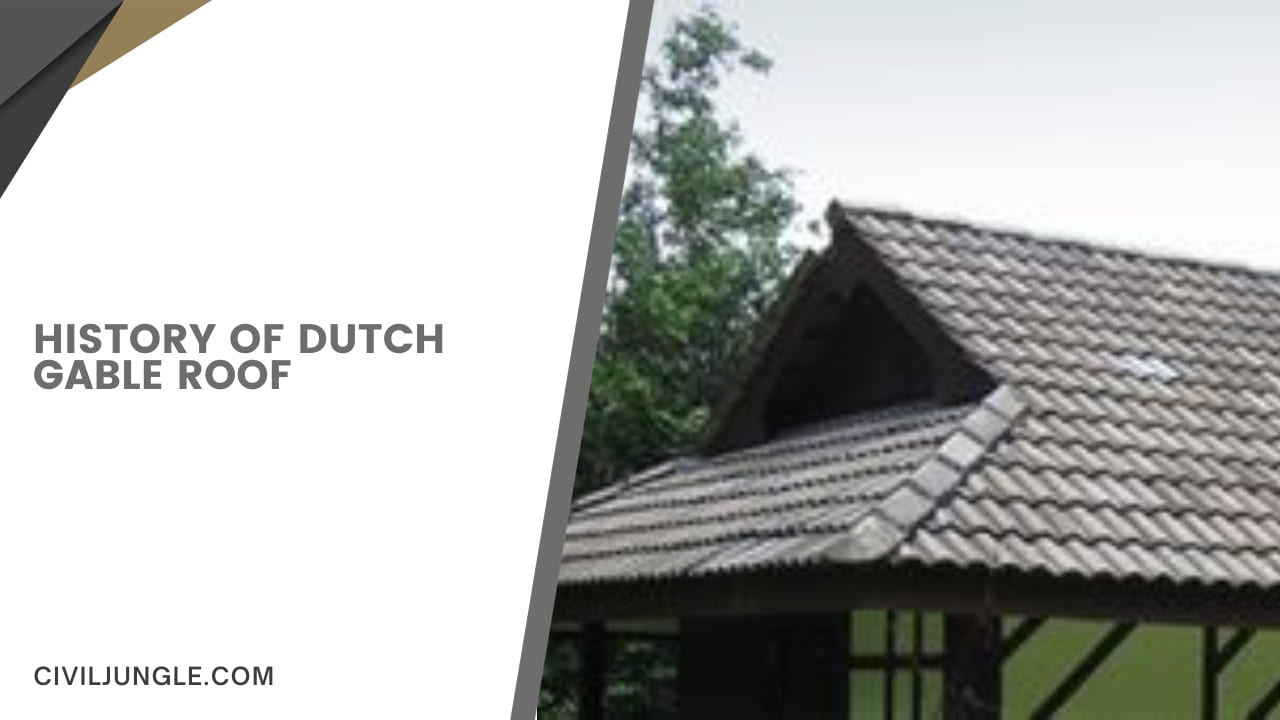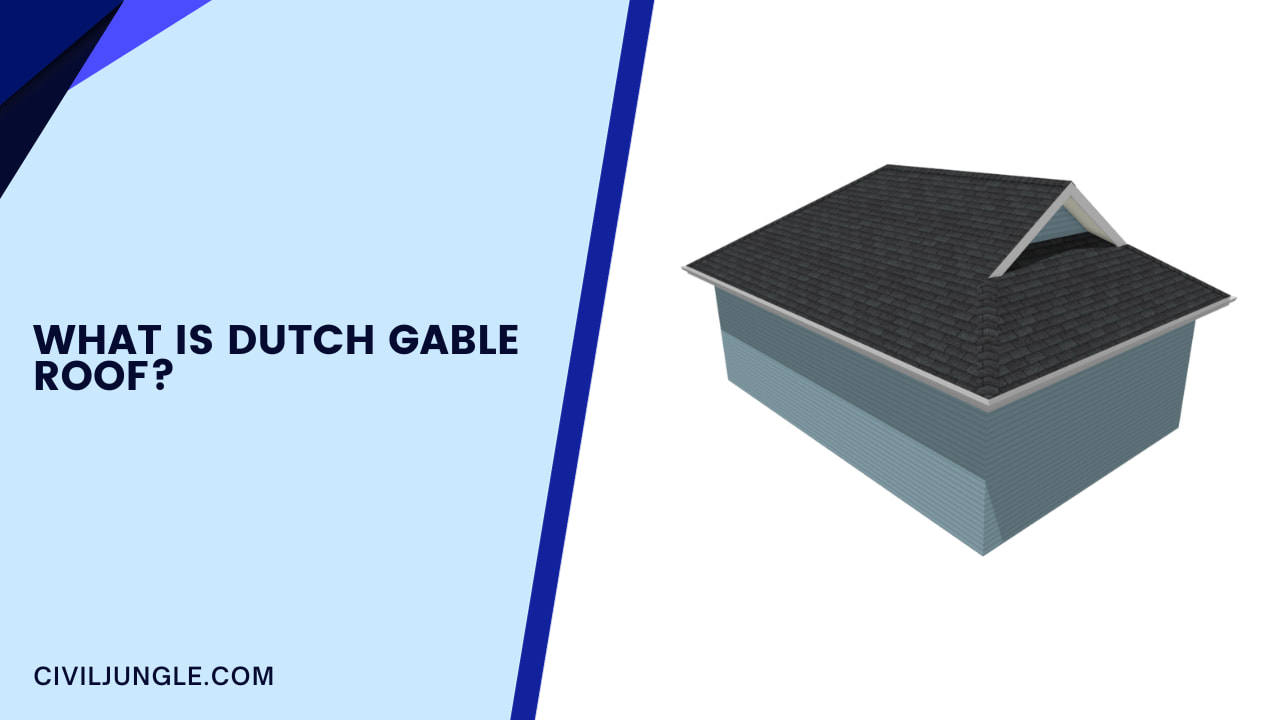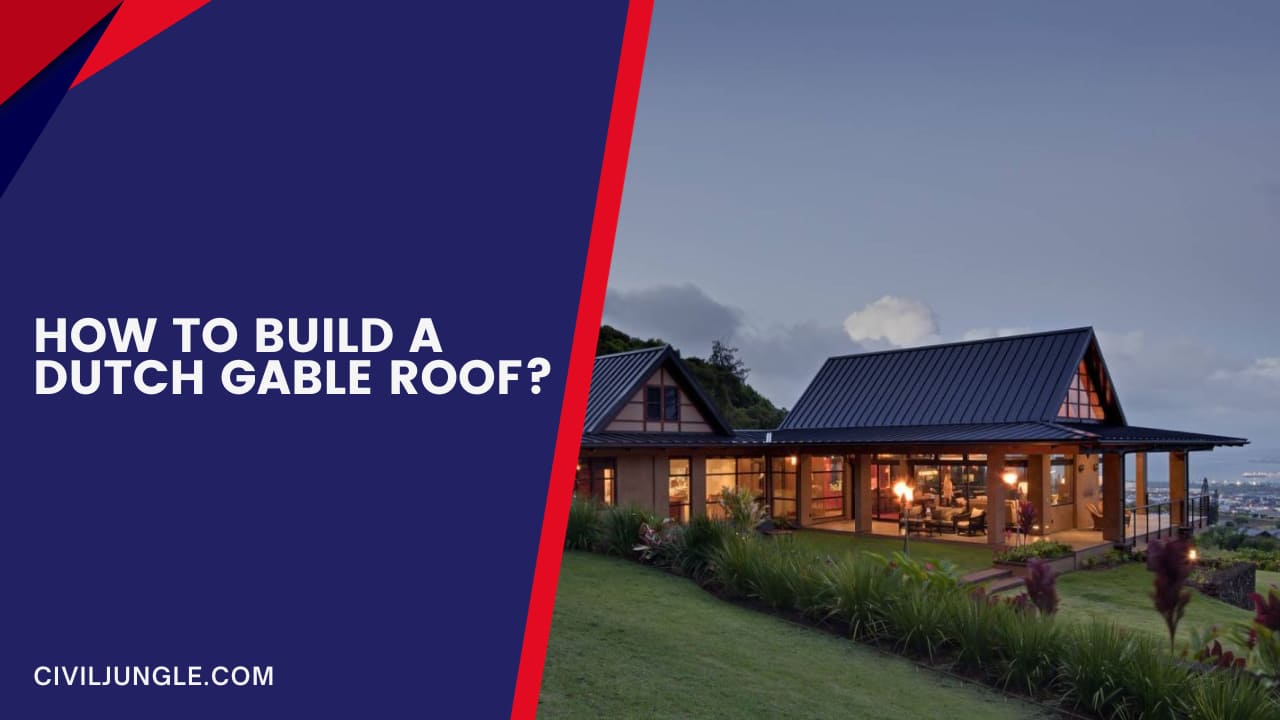
Introduction of Dutch Gable Roof
The Dutch gable roof also called a gablet consists of the top of a roof of a small gable. In this type of gable roof, two sloping sides peak at the top center.
To mean a gable with a parapet the Dutch gable term is also used. In many building designs, it is used and it has two sloping sides in different directions which meet to form a ridge.
With the Dutch gable roof, we can get a combination of a hip roof and a gable roof, which is essentially a Dutch gable roof design. In this Dutch gable roof shapes, colors, and locations all are used to tweak it.
In a Dutch gable roof system, you can achieve a modern look, functionality, mixing of decor, and elegance. A wide range of Dutch gable roof designs, including three examples of Dutch gable roof designs, are available to pick from, and all of them are astonishing and durable.
Without providing adequate support to the frames, they can create problems in high-wind areas, which can cause some hazards. The Dutch gable roofing system is also can help in winter to reduce the heating bill of your house.
In the areas of temperate climates or cold, these types of Dutch gable roofs are mostly used. Roof trusses, rafters, or outlines are used to achieve the design of this type of roof.
History of Dutch Gable Roof

A roof is a very important part of your building or house because of it protects you from snow, rain, sunlight, storms, ice, wind, and many natural disasters. To save us from this above disaster a concept discovered for the house is called a roofing system.
After that, the roofing system, many types of roofing systems came, in which systems Dutch roofing system is a part of them. In Renaissance architecture, the Dutch gable roof was extremely popular.
In early ancient Greek times, gable roofs were used in temples. As early as they were first seen in the 14th century and around the 16th century to Britain they made their way.
They are considered a Baroque architectural staple in northern Europe and America ever since. If a building faces the street with its Dutch gable, it is called a front Dutch gable roof elevation building.
In a Dutch side-gabled building, the ridges face it with its gutter or cullies and are parallel to the street. In German city streets, were considered the norm Dutch front-gabled buildings in the medieval gothic period.
Dutch gabled buildings, showcasing various Dutch roof designs, became popular in the Renaissance period between the 14th to 17th centuries and were influenced by Italian architecture.
These types of Dutch gable buildings are also found in Germany, France, Belgium, and Bruges. In tropical climates, the Dutch hip roof is very beneficial; for this reason, this type of Dutch roof style is also adopted in South Africa and Barbados, etc.
What Is Dutch Gable Roof?

The Dutch gable roof also called a gablet consists of the top of a roof of a small gable. In this type of gable roof, two sloping sides peak at the top center. To mean a gable with a parapet the Dutch gable term is also used.
In many building designs, it is used and it has two sloping sides in different directions which meet to form a ridge. By the Dutch gable roof, we can get a combination of a hip roof and a gable roof. In this Dutch gable roof shapes, colors, and locations all are used to tweak it.
In a Dutch gable roof system, you can achieve a modern look, functionality, mixing of decor, and elegance, featuring three Dutch gable roof designs, etc.
A wide range of Dutch gable roof designs, including three examples of Dutch gable roof designs, are available to pick from, and all of them are astonishing and durable.
Without providing adequate support to the frames, they can create problems in high-wind areas, which can cause some hazards.
In the areas of temperate climates or cold, these types of Dutch gable roofs are mostly used. Roof trusses, rafters, or outlines are used to achieve the design of this type of roof.
How to Build a Dutch Gable Roof?

This part is generally divided into three sub-portions, those are-
1. Framing of Gable Ends
At first, we need to nail 2 boards on the wall as top plates. Then we add ceiling joists on the top plates which are 24 inches in size. After that, we need to determine the pitch of the roof and start cutting the operation of the rafters to fit the slope.
Then we need to seat cut on the end of the rafters to lay flat on the top. Add vertical supports to the external walls using 2-inch by 4-inch boards. Then we clamp the rafters and attach those on the top plates using hurricane clips.
2. Adding Walkway
When you are fixing a gable roof then you need to remember about your sideway for walking purposes. So, you need to prepare a sideway by placing plywood and after that place the nails to fix that plywood. After that, you can easily access the Dutch gable roof at the time of construction.
3. Adding Ridge Boards and Rafters
For the ridge board, we use a straight board of size 2 inches x 6 inches. Then we nailed the end rafters and put those on the center of the roof to support the ridge board. Then we fill the rest part of the rafters with ceiling joists.
4. Installing Shingles
At last, we start the sheathing operation on the top of the roof and cover those portions with a layer o felt paper. Then we need proper care of shingles and place shingle cap on the peak of the roof.
Advantages of Dutch Gable Roof
There are many advantages of Dutch gable roofs that’s are below-
- The advantage of the Dutch gable roofs is, that from the gable or traditional hip roofs, the Dutch gable roofs provide more sunlight.
- It also can help in winter to reduce the heating bill of your house. It is another advantage of the Dutch gable roof.
- Creating lighter or ventilations and also a window can be placed in the gablet for light and it is also providing extra storage space from the traditional hip roof. It is another advantage of a Dutch gable roof.
- The advantage of the Dutch roof system is, it also increases the design beauty of your house by providing an interesting and unique look from a traditional roof.
- For constructing of Dutch roof, you can use any type of materials like concrete, shingles wood or slate shakes, etc. It is another advantage of a Dutch gable roof.
- Metal is the more recommended material for making the Dutch roof lightweight, strong, and durable. It is another advantage of a Dutch gable roof.
- Another advantage of a Dutch gable roof is, in those areas where the temperate climates or cold, these types of Dutch gable roofs are mostly used.
- By the Dutch gable roof, we can get a combination of a hip roof and a gable roof. It is another advantage of a Dutch gable roof.
- Another advantage of a Dutch gable roof is, by that we can get a modern look, functionality, mixing of decor, and elegance can be achieved by a Dutch gable roof system.
- The advantage of the Dutch gable roof is that in a tropical climate, the Dutch gable roof is very beneficial for this reason this type of roof style is taken also South Africa and Barbados, etc.
Disadvantages of Dutch Gable Roof
The Dutch gable roof has many disadvantages thars are below-
- The disadvantage of the Dutch gable roof is, that this Dutch gable roof has various pitches that have to be determined and those various pitches make complicate the construction of the Dutch roof.
- On a pitch with straight walls resting, on the roof of an additional structure, a gablet is similar to a building. It is another disadvantage of a Dutch gable roof.
- The common disadvantage of a gable roof is, for the construction of gable roofs additional materials are required to make the gablet and supports leak and waterproof.
- If the gablets and shingles joints are properly sealed then rainwater or snow can enter the house through the unsealed joint of the gablet or shingles.
- Another disadvantage of the Dutch gable roofs is, that without having adequate support to the frames, they can create problems in high wind areas.
- For the construction of Dutch gable roofs, more experienced laborers are needed, because It is used for many building designs and has two sloping sides which meet to form a ridge. It is another disadvantage of a Dutch gable roof.
- The disadvantage of a Dutch gable roof is, on a Dutch gable roof when we use asphalt shingles for roofing, as metal roofing the asphalt shingles do not last longer, and also it does not provide adequate water protection metal roofing.
- To choose the asphalt shingles we need to add a waterproofing coating that increases the construction cost of the traditional roofing system. It is another disadvantage of a Dutch gable roof.
Frequently Asked Questions (FAQ) about Dutch Gable Roofs
What Is a Dutch Gable Roof?
A Dutch gable roof, also known as a gablet, features a small gable at the top of a larger roof. It combines elements of a hip roof and a gable roof, creating a distinctive and functional design. The two sloping sides of the roof meet at the top center, forming a ridge.
What Are the Main Benefits of a Dutch Gable Roof?
Dutch gable roofs offer several advantages including increased natural light, reduced heating costs in winter, additional ventilation, and extra storage space. They also enhance the aesthetic appeal of a building with their unique and elegant design.
What Are the Disadvantages of a Dutch Gable Roof?
Some drawbacks include complex construction due to varying pitches, the potential for leaks if joints are not properly sealed, and the need for experienced laborers. Additionally, asphalt shingles may not last as long as metal roofing options.
What Materials Can Be Used for Dutch Gable Roofs?
Dutch gable roofs can be constructed using a variety of materials, including concrete, shingles, wood, slate shakes, and metal. Metal roofing is often recommended for its durability and lightweight properties.
How Does the Dutch Gable Roof Perform in Different Climates?
Dutch gable roofs are well-suited for temperate and cold climates due to their ability to reduce heating costs and provide additional insulation. They are also beneficial in tropical climates, where their design helps manage ventilation and heat.
What Is the Historical Significance of the Dutch Gable Roof?
Dutch gable roofs have historical roots in Renaissance architecture and were popular in northern Europe and America. They originated from early gable roof designs seen in ancient Greece and became a staple in Baroque architecture.
How Is a Dutch Gable Roof Constructed?
The construction involves framing the gable ends, adding a walkway for access, installing ridge boards and rafters, and finally, applying shingles. Each step requires careful planning and precision to ensure structural integrity and aesthetic appeal.
Can a Dutch Gable Roof Be Adapted to Different Architectural Styles?
Yes, Dutch gable roofs are versatile and can be adapted to various architectural styles. They can be customized with different shapes, colors, and materials to match the desired look and functionality of a building.
What Maintenance Does a Dutch Gable Roof Require?
Regular maintenance includes checking for leaks, ensuring joints are properly sealed, and inspecting the roof for damage. Keeping the roof clean and addressing any issues promptly will help extend its lifespan.
Are Dutch Gable Roofs Suitable for Diy Construction?
While it is possible for skilled DIY enthusiasts to construct a Dutch gable roof, it is often recommended to hire experienced professionals due to the complexity of the design and the need for precise construction.

